Mindfulness and Parenting: How Neurofeedback Helps Parents Be Flexible
Mindful parenting tips on how to meet the tasks and stressors of parenting and why neurofeedback training should be part of your self care regimen.
Learn the best brain training programs for your goals whether they are mental fitness, emotional wellbeing, peak performance or managing sleep.
Here's a collection of the best brain training programs that are backed by research that I have seen in my 18 years in the wellness field.
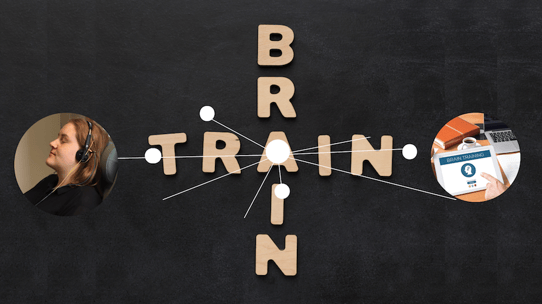 There are four key areas of performance that can be enhanced through brain training:
There are four key areas of performance that can be enhanced through brain training:
Most articles focus on just one benefit of brain training: improving memory or cognitive skills through brain training apps or games. But for the best results in any one category, I recommend a program that combines strengthening all aspects of brain performance:
We all have had the experience of memorizing or rehearsing a speech, then not getting enough sleep and struggling to perform the next day. For this article, I have broken down suggestions based on four groups who often seek brain training:
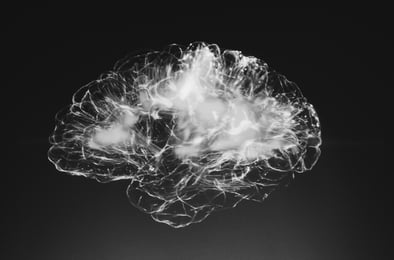
What defines a brain training program? A brain training program allows us and our unconscious brain to learn new habits that allow us to re-train ourselves.
Though the term brain plasticity has been around since William James coined it in the late 1800s, the idea of brain training as concept has grown out of the discoveries over the last 30 years in neurology and neuropsychology, specifically due to the growth of brain imaging technologies that can prove the brain's rehabilitation abilities.
Neuroplasticity is the concept that the brain can learn new things and, as a result, change where it houses functions and grow new structures in the brain. The main communication pathways of the brain, called neurons, can form new pathways and generate new cells throughout the human lifespan.
.jpg?width=378&name=richard-gatley-533872-unsplash%20(1).jpg)
Anyone older than 40 will remember a time when neurologist thought that the brain was actually a fixed system, which meant, for example, that damage from a stroke to the language center meant that the functioning was lost for good.
The discoveries about neuroplasticity are the equivalent in brain studies to when explorers discovered that the world was round instead of flat!
Out of these discoveries the brain training industry has grown both to help with rehabilitation and also to optimize health and wellness. In this article we'll explore the latter goals.
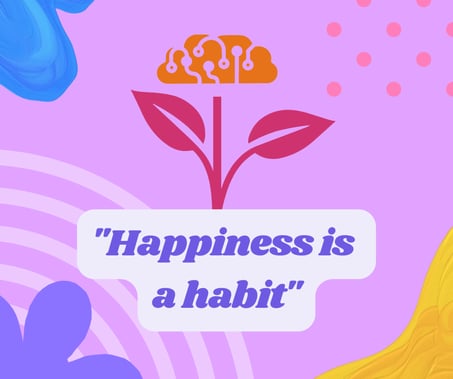 There are some brain training programs that yield more results than others. Given the infancy of this area of health and wellness, there will be more and more brain training studies conducted in the coming years.
There are some brain training programs that yield more results than others. Given the infancy of this area of health and wellness, there will be more and more brain training studies conducted in the coming years.
Below I will highlight which programs have results confirmed by research.
The biggest reason programs don't work is because the individual doesn't do it, does it too infrequently or stops before he or she can experience the full results. Brain training programs only work if you work them.
My main role in coaching clients is not figuring out what the right program is for them, but rather helping them stick with their schedule long enough to see results. In general, the best results come with more focused repetition of the new behaviors at first, then tapering off to maintenance training over time. Like with any form of learning, more frequency leads to seeing the results faster.
Anyone who has ever tried to learn a language knows this but we need to be reminded.
The main concerns of individuals in this category are that they want to maintain their mental agility and cognitive functioning as they age.
Most people here aren't so much interested in improving skills as not losing them! This goal includes:
 For these goals, brain training apps are a good start. Luminosity, which is the best known application, has been around long enough that their games have been used in 20 peer-reviewed publications in academic journals.
For these goals, brain training apps are a good start. Luminosity, which is the best known application, has been around long enough that their games have been used in 20 peer-reviewed publications in academic journals.
They have consistently shown to improve memory and processing speed. With only 15 minutes a day of training, people can see improvement. The sessions are fun, and they give assessments so you can track your performance.
The other very popular brain training app is CogniFit, which is a smartphone app design for improving memory and concentration.
There is yet to be solid research showing these games work.
Another way to enhance concentration and memory is to learn a new language. Though most of the research on mental fitness and learning a new language is with younger adults and children, the principles of neuroplasticity imply that it benefits adults in similar ways.
Reseachers have found correlations between knowing more than one language and delays in the onset of dementia.
Brain training apps can be part of the overall program but neuroscientists encourage combining different modalities that have a positive impact on cognitive health. These include sleep management, eating a proper diet that contains brain foods, and regular exercise.
This group of brain trainers want to perform at their best mentally to outperform peers and reach new mental goals.

These goals are similar to general mental fitness but with an added brain-drainer: they usually also need support managing their stress.
Research shows that stress interferes with work and school performance alike. The American College Health Association reports that more than 80% of students feel overwhelmed and 65% of students seek counseling due to stress and worry.
This group often also needs brain training programs that to help them manage their executive functioning. Before starting with a new behavioral program for task and time management, it is more fruitful to start with tools that help refresh you so that you can focus and learn a new behavioral program such as the SMARTS program.
In order of importance, here's my list of the items in an overall brain training program, for optimizing executive functioning and school performance:
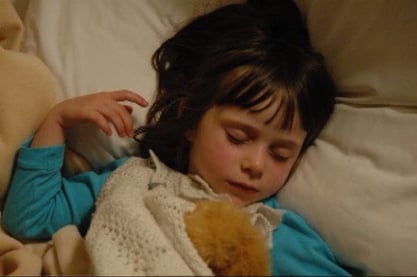 Get enough sleep. Not sure how much sleep you or your children need? Check here.
Get enough sleep. Not sure how much sleep you or your children need? Check here. 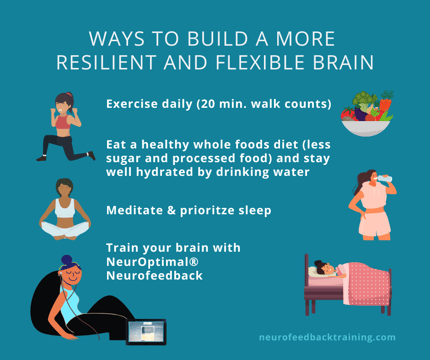 Try neurofeedback. This form of brain training specifically helps us to support or mental and emotional fitness. It works directly with reading the brain wave activity and feeding back real-time information about our habits, especially around the stress response. I have known people use it for peak performance in music. One composer regularly does neurofeedback sessions when he is in the heart of composing a new piece. He told me: "It's like it dissolves the gates that hold me back from creative flow."
Try neurofeedback. This form of brain training specifically helps us to support or mental and emotional fitness. It works directly with reading the brain wave activity and feeding back real-time information about our habits, especially around the stress response. I have known people use it for peak performance in music. One composer regularly does neurofeedback sessions when he is in the heart of composing a new piece. He told me: "It's like it dissolves the gates that hold me back from creative flow." Stress management and emotional fitness are in the same group here because a large part of stress is emotional. The emotional or reptilian brain rules how we respond to problems when we, which is mostly this primitive brain, perceive them as threatening.
.jpg?width=340&name=david-clode-800584-unsplash%20(1).jpg) The stress response, which is an important part of healthy brain functioning, consists of parts of the brain that we do not consciously control. It is part of our survival mechanism and its job is to keep us from incurring serious bodily harm.
The stress response, which is an important part of healthy brain functioning, consists of parts of the brain that we do not consciously control. It is part of our survival mechanism and its job is to keep us from incurring serious bodily harm.
What mental health experts have discovered is that this part of the brain also becomes habituated in its desire to use energy efficiently and it takes short cuts and in a millisecond can interpret the current moment to be a dangerous one. When this part of ourselves is in charge you'll know because your thoughts, feelings and behaviors will reflect the strategy of flight/fight/freeze: run from the problem, attack it, or play dead.
Examples of flight are to spontaneously quit a job or walk out of the house during an argument. Examples of fight are spontaneously yelling when it's not necessary to communicate an idea.
The freeze response can be staring numbly at our phone for hours not wanting to engage the world. Or thinking: why bother, it's hopeless.
Emotional fitness is reseting this stress habit. Everyone has the stress response habit to some degree and the more flexibility of our emotional response, and the more our emotional responses are in alignment with the here-and-now needs, the more emotional fitness we have and the less 'stressed-out' we are.
Put simply, the more in control we are of how we respond to situations and problems the more emotionally flexible we are. And the less the reactive primitive brain is in charge of how we view and respond to the world.
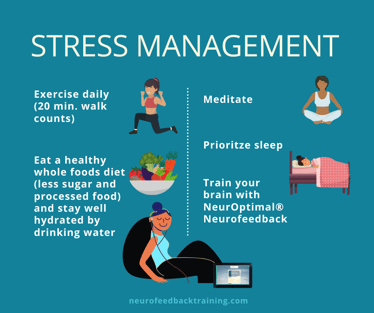
The brain training programs recommended for this group wanting to manage stress and their emotions, include elements for mental fitness but with a couple of added tools for emotional health.
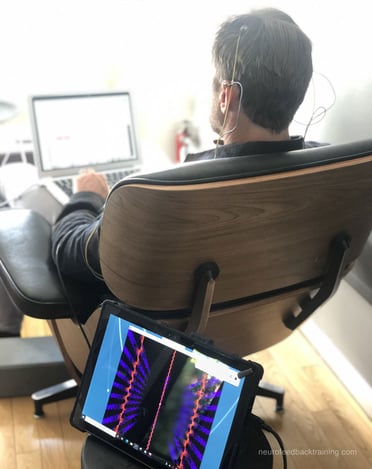 Minimize your sugar intake. The blood-sugar rollercoaster from not eating regularly and eating too much white foods and sugary foods and drinks is significant contributor to the peaks and valleys of our mood.
Minimize your sugar intake. The blood-sugar rollercoaster from not eating regularly and eating too much white foods and sugary foods and drinks is significant contributor to the peaks and valleys of our mood. Neurofeedback for emotional fitness. When you are used to responding with the fight/flight/freeze emotional energy giving yourself and your brain the support to see these patterns can be key for resetting them. In combination with getting sleep, exercising and eating whole foods, neurofeedback is a great addition for helping us reset those habits. Learn more from testimonials by people who have used it as part of their emotional wellness regime.
A Neurofeedback Review: How Do You Manage Stress in Your Life?
There is no absolute answer to how long you should do a brain training program but here are some suggestions about frequency and duration. There is some truth to the adage: it takes 21 days to change a habit. My observation is that clients fail at their programs not because they won't bring them benefit, but because they quit before the benefits can be fully experienced. 
Start with one aspect of your brain training program for 21 days and, if you feel you have mastered that aspect you can add a second one. So, if you are training for mental fitness and you have horrible sleep habits, you might want to start with reading about good sleep hygiene and practice it for 21 days. It does take time to re-wire our habits. I have witness people try a new sleep regimen and after a week say, "it isn't working." The only thing not working is the client's expectations.
If you feel overwhelmed about starting any regime that is self-initiated, then I would say start with neurofeedback training. I have seen people do a few months of just neurofeedback without any other changes, then found themselves ready to change their sleep routine, look at the diet they eat, or get back to the gym.
In short, start with one part of your brain training regime. Try it for 21 days and then decide how much benefit it's bringing you. Learn more about affordable brain training tools at home.
Natalie Baker has over 25 years of experience as a licensed psychotherapist and has been a NeurOptimal® neurofeedback trainer since 2011. She is the founder of Neurofeedback Training Co., which offers in-person sessions and runs the largest nationwide home rental program for NeurOptimal systems. Natalie also teaches meditation and Buddhist psychology and specializes in working with anxiety, stress, ADHD, and trauma.
Mindful parenting tips on how to meet the tasks and stressors of parenting and why neurofeedback training should be part of your self care regimen.
Teach your child mindfulness and help them develop self-control, self-regulation, and resilience. Discover the evidence-based benefits in our...
Neurofeedback is an effective tool for dealing with performance anxiety and fear. Neurofeedback training is a safe way to train your brain and...
Be the first to know about new blogs